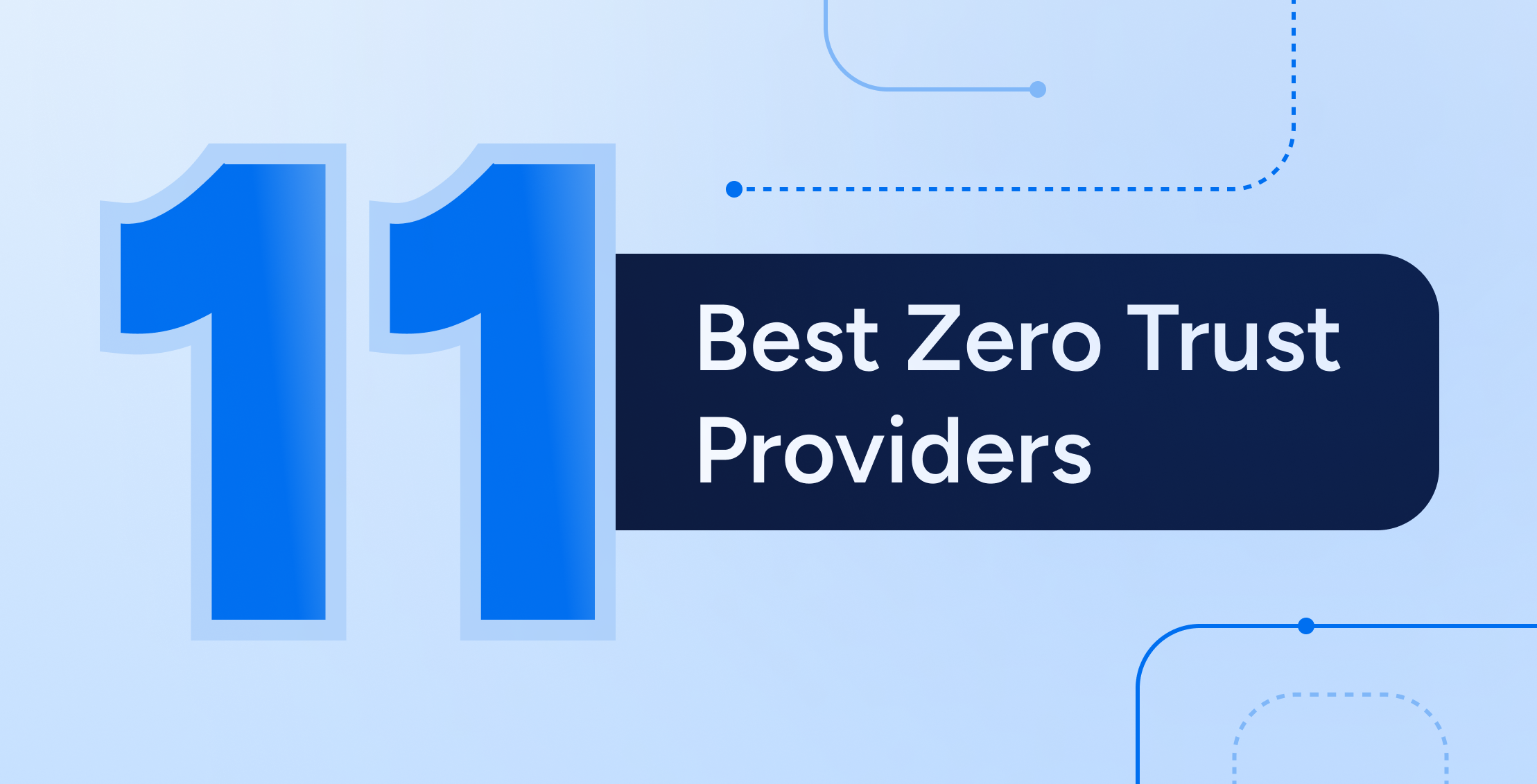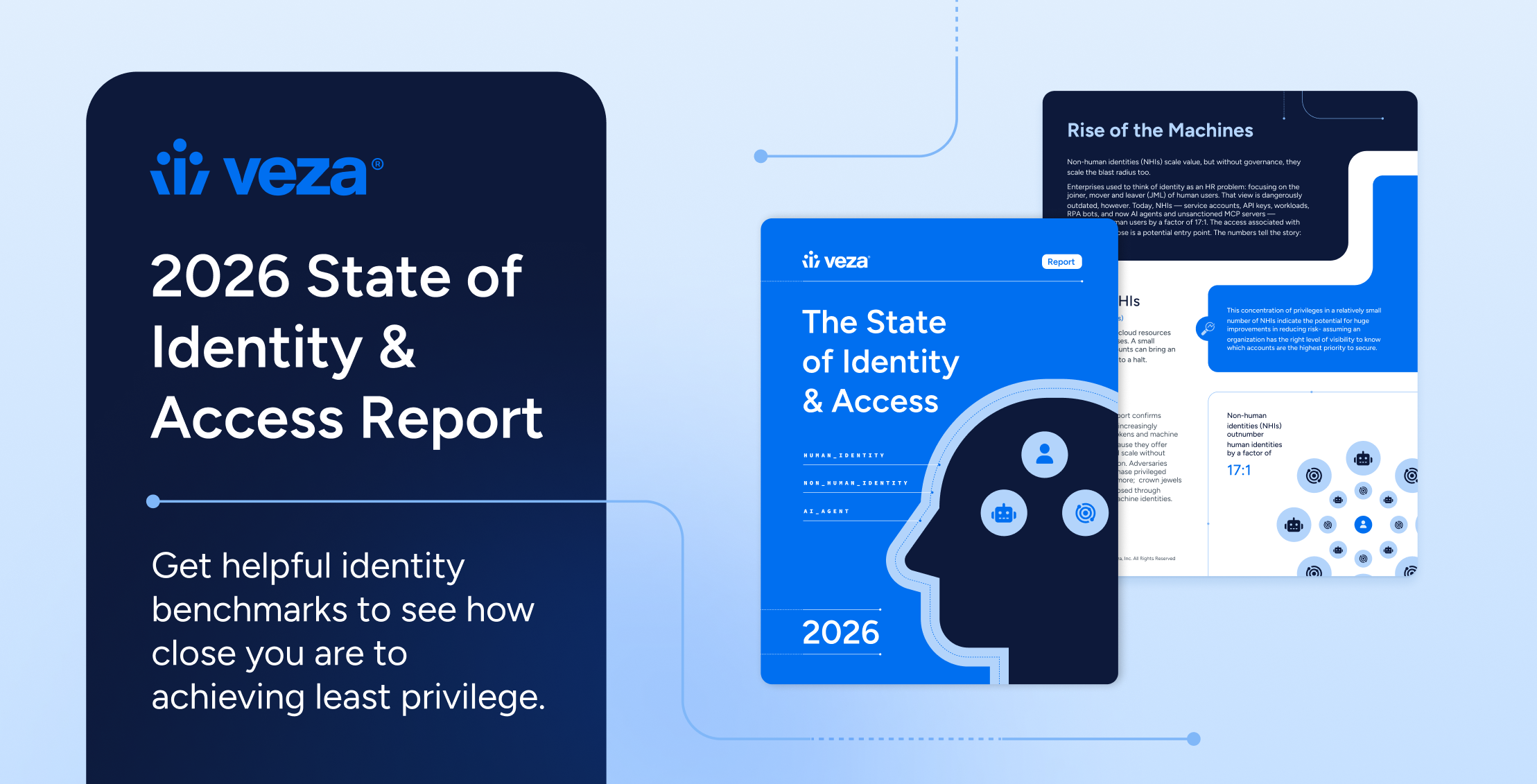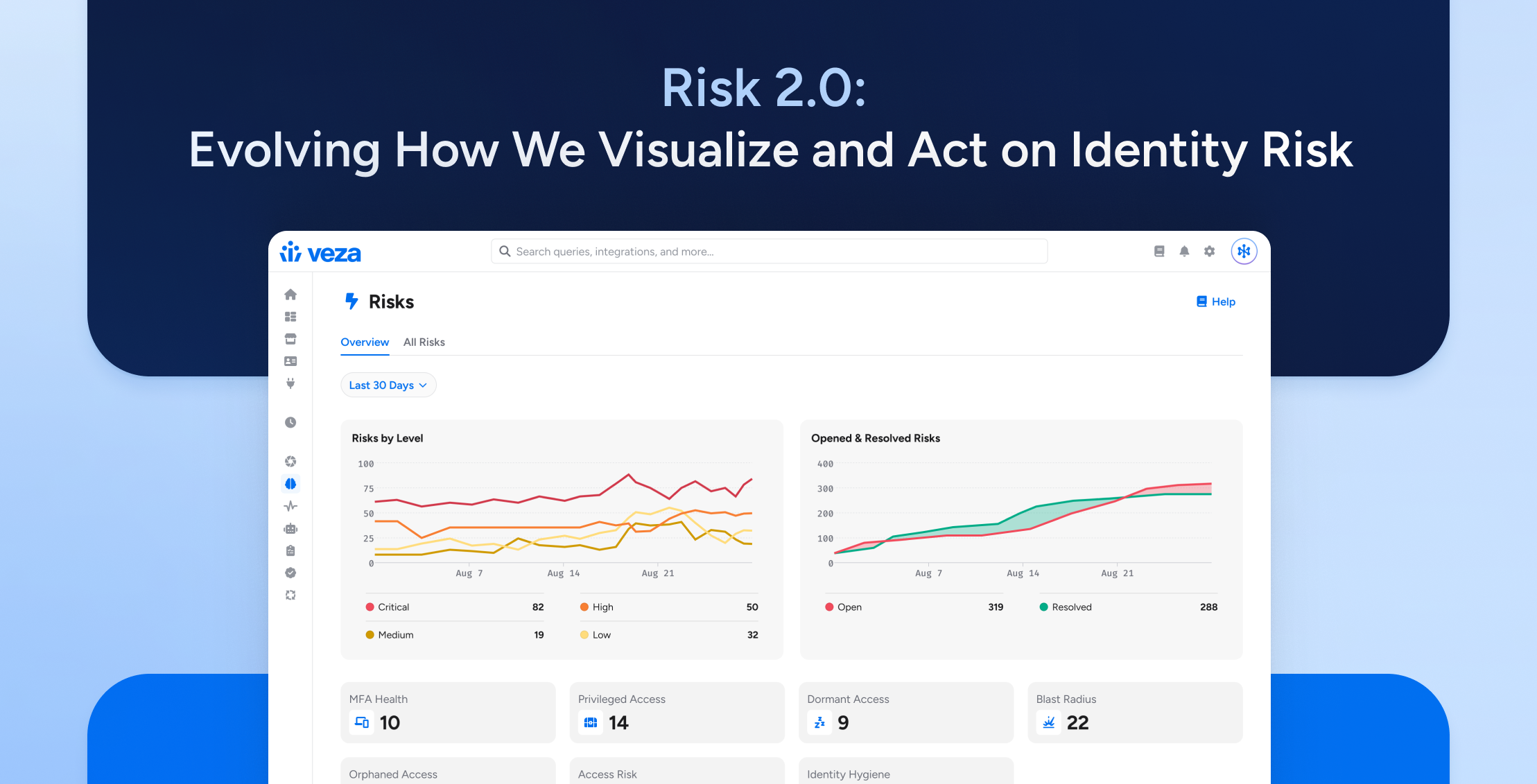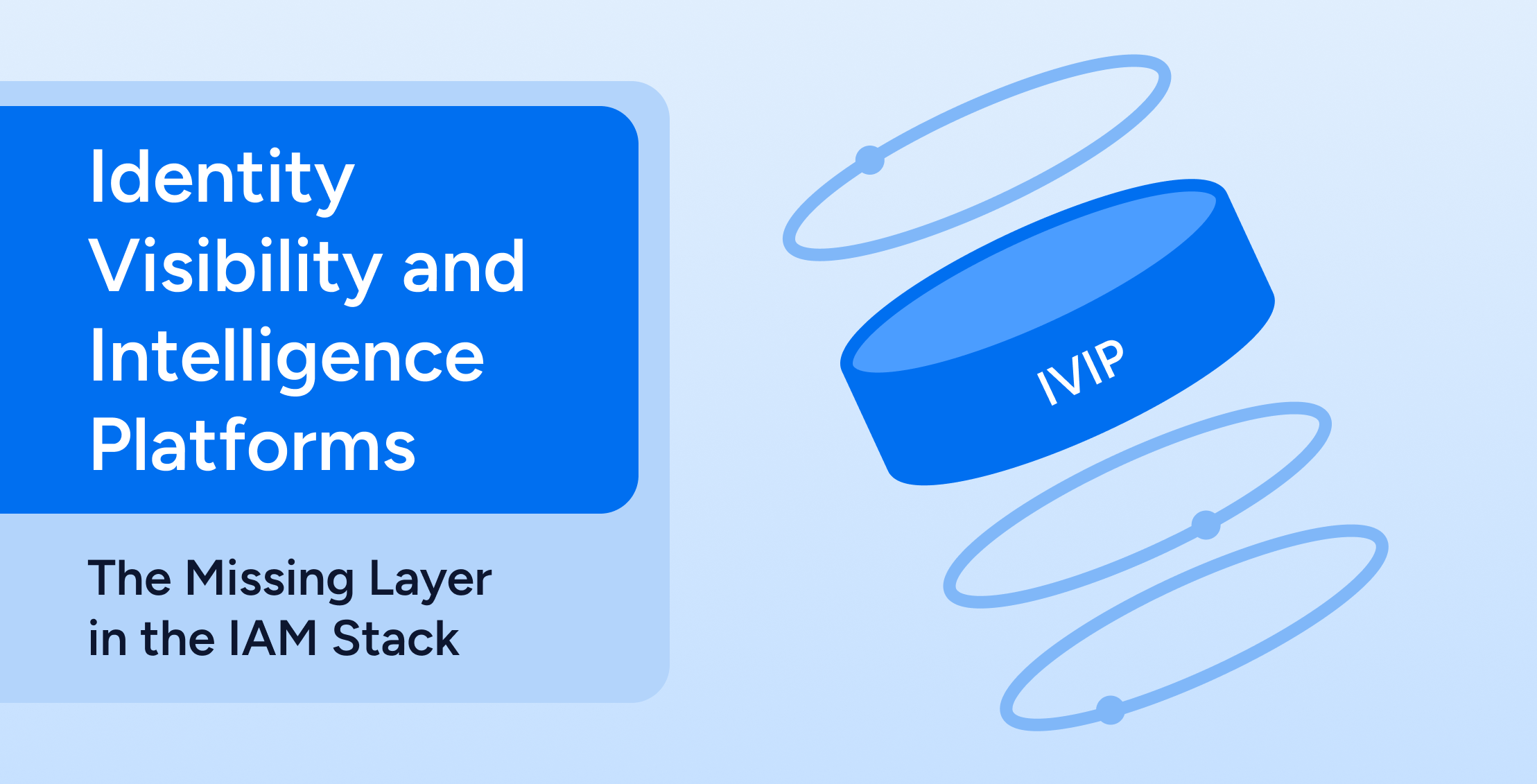
After two decades of building and securing identity infrastructures, organizations have layered tool upon tool into their IAM environments. PAM here, CIEM there, IGA in the corner, secrets management scattered everywhere. Each tool solving its piece of the puzzle, each creating its own silo of identity data.
Gartner just gave a name to what many have been desperately trying to build: Identity Visibility and Intelligence Platforms (IVIP). This isn’t just another acronym; it’s a recognition of a fundamental gap that has been plaguing security teams for years.
The Reality Check: Identity Data is Everywhere and Nowhere all at Once
To paint a familiar picture, consider a CISO asking: “Who has access to our customer data in production?” Simple question, right?
Now imagine a team scrambling across:
- Active Directory for user groups
- A PAM solution for privileged accounts
- AWS IAM for cloud roles
- ServiceNow for service accounts
- A PKI system for certificates
- HashiCorp Vault for secrets
- GitHub for API keys
- A CIEM tool for cloud entitlements
Three days later, there might be an answer. Maybe. If nothing changed while the team was looking.
This is the identity visibility crisis that Gartner is highlighting. Sophisticated tools have been built for managing pieces of identity, but sight of the whole has been lost. As Gartner notes, “Different tools perform distinct discovery processes and manage different aspects of identities and entitlements. To combat the fragmented visibility caused by siloed data, organizations must apply data engineering practices to IAM.”
What Are Identity Visibility and Intelligence Platforms?
Gartner defines IVIPs as platforms that “gather, categorize, and visualize identity data across directories, tools, and multiple IAM domains.” But let’s break down what this actually means for practitioners:
It’s Not Another Directory
This isn’t about creating yet another identity store. As Gartner explicitly states, these platforms are “distinct from a traditional user or metadirectory.” Instead, they act as an intelligence layer that makes sense of the identity data you already have scattered across your environment.
It’s About Relationships and Context
Traditional IAM tools manage atomic components—accounts, certificates, secrets—in isolation. IVIPs understand that a service account in AD, an AWS role, and an API key in GitHub might all represent the same workload. They map these relationships to show you the true permission fabric of your organization.
It’s Built for Modern Complexity
With non-human identities outnumbering human ones by 40:1 (and growing), with AI agents spawning new identities at machine speed, with workloads living for seconds not years, traditional IAM approaches simply can’t keep up. IVIPs are designed for this new reality.
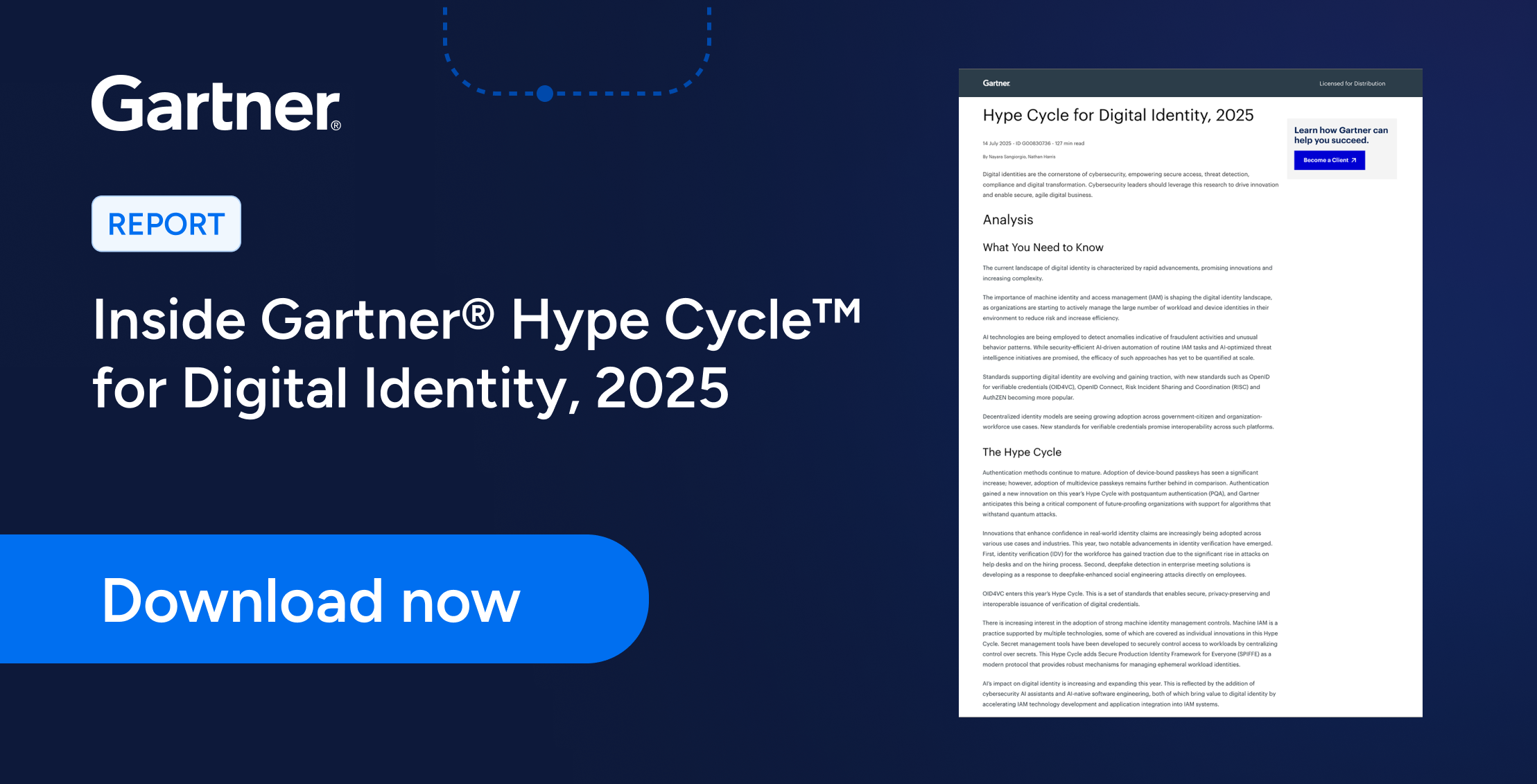
The Practitioner’s View: Why This Matters Now
1. The AI Explosion Demands It
Every AI initiative creates a web of new identities, including agents, service accounts, API keys, and certificates. Without visibility into what these identities can access, organizations are flying blind. As organizations race to adopt AI, those without identity intelligence will find themselves choosing between innovation and security. With an IVIP, the choice doesn’t have to be made.
2. Zero Trust Requires It
“Never trust, always verify” cannot be implemented if it’s unknown what identities exist or what they can access. Zero Trust at machine speed—as Gartner calls it—requires real-time visibility into every identity’s effective permissions across an entire estate.
3. The Board Demands It
When the SEC comes knocking, when cyber insurance renewals arrive, when the board asks about AI security answers, not spreadsheets, are needed. IVIPs provide the authoritative view of identity risk that modern governance requires.
4. The Team Needs It
Security teams are drowning in alerts without context. When a SIEM flags suspicious activity, it’s necessary to instantly know: What can this identity access? What’s the blast radius? Should this access even exist? Without an IVIP, investigations are conducted in the dark.
How Veza Embodies the IVIP Vision
At Veza, the platform has been built toward this vision because the pain is real. The platform embodies the IVIP concept through several key capabilities:
Unified Identity Discovery
Every identity—human and non-human—is continuously discovered and mapped across an environment. Not just who they are, but what they can access, how they got that access, and whether they should have it.
The Access Graph
Identity data isn’t just collected; a living, breathing map of the permissions and entitlements fabric is built. Every identity, every permission, every relationship—visualized and queryable in real-time.
Intelligence, Not Just Data
Raw identity data is overwhelming. Intelligence is provided: toxic combinations, unused permissions, policy violations, and access anomalies. Identity data is turned into actionable insights.
Integration, Not Replacement
Veza is not here to replace all IAM tools. It makes them better by providing the visibility and intelligence layer they’ve always lacked. A PAM still manages privileged account credentials; Veza shows what these accounts’ access actually means.
The Path Forward: Building Your Identity Intelligence Strategy
For those ready to move beyond fragmented identity management, here’s where to start:
1. Acknowledge the Gap
Stop pretending existing IAM tools provide complete visibility. They don’t. They can’t. They weren’t designed to.
2. Map Your Identity Sprawl
Document where identity data lives in the environment. It may be surprising how many systems hold pieces of the puzzle.
3. Define Your Use Cases
Start with clear objectives:
- Understand the blast radius for incident response
- Identify toxic permission combinations
- Support Zero Trust initiatives
- Enable secure AI adoption
- Simplify compliance reporting
4. Think Platform, Not Point Solution
IVIPs aren’t just another tool—they’re the intelligence layer that makes all your other tools more effective.
The Bottom Line: We Can’t Secure What We Can’t See
Gartner’s recognition of Identity Visibility and Intelligence Platforms validates what practitioners have known for years: traditional IAM is necessary but not sufficient. In an era of AI agents, 40:1 machine identities, and Zero Trust mandates, visibility isn’t optional; it’s existential.
The organizations that thrive in this new world will be those that transform identity data from a compliance burden into a strategic asset. They’ll know not just who has access, but what that access means, why it exists, and whether it should continue.
The question isn’t whether an Identity Visibility and Intelligence Platform is needed. The question is whether one will be built (hint: it shouldn’t be) or if platforms like Veza that are purpose-built for this challenge will be leveraged.
Traditional IAM tools weren’t built for the speed and complexity of today’s identity landscape. With Veza, you can unify fragmented identity data, visualize the full permissions fabric, and surface access risk in real time, across all systems, all identities, all at once.
Veza connects to every layer of your enterprise, from on-prem directories to cloud apps and infrastructure, to build a comprehensive map of who can take what action on what data. Whether you’re managing humans, service accounts, AI agents, or machine identities, Veza gives you the context you need to govern access with confidence.
Looking to build foundational knowledge on why visibility gaps persist despite mature IAM deployments? Start with our explainer on Identity Security Posture Management to understand the limits of traditional tools and the rise of continuous access visibility.
Curious how AI can enhance your identity security posture? Learn how Veza tackles non-human access risk in our guide to securing machine identities, and why real-time context matters more than ever.
Already evaluating next-generation identity solutions? Schedule a demo to see how Veza operationalizes the Identity Visibility and Intelligence Platform (IVIP) model, powering Zero Trust, AI governance, and least privilege enforcement across your entire enterprise.
Welcome to the era of identity intelligence. It’s about time.

